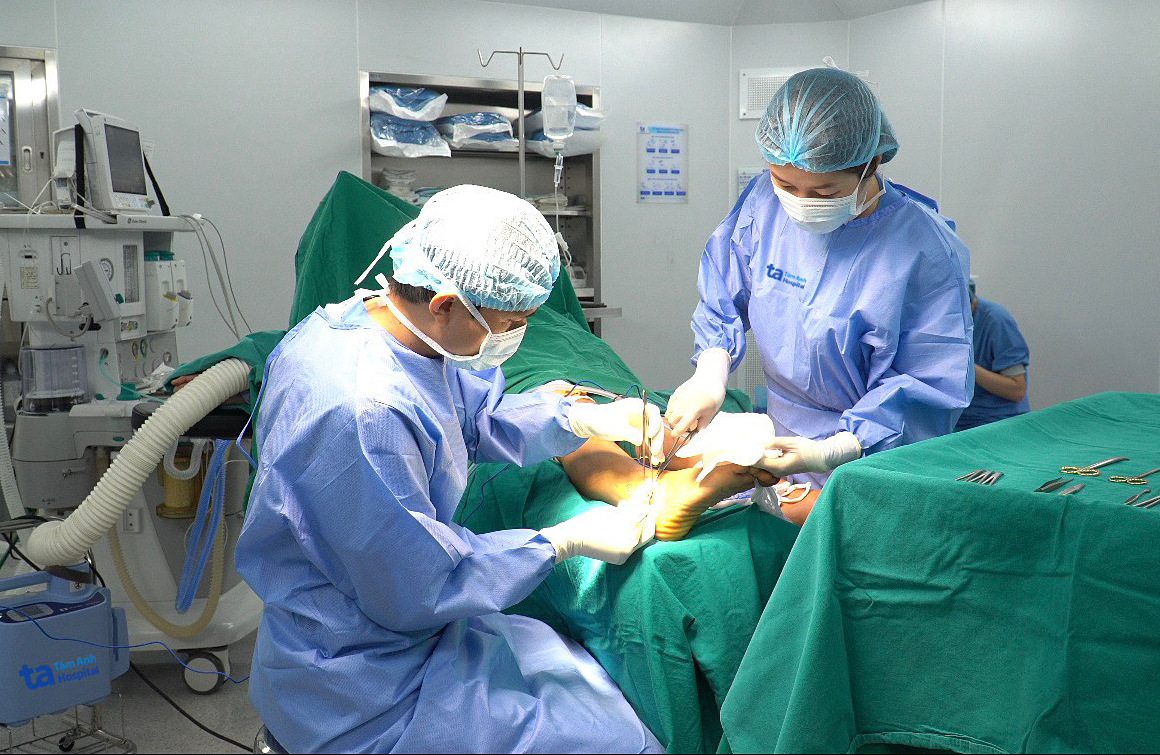Flat foot is a condition where the sole of the foot (the arch) is flat, lacking a natural curve when standing. Children are most susceptible to flat feet due to the flexible nature of their developing bones and ligaments, which can deform under the influence of gravity, genetics, or incorrect posture.
Dr. Nguyen Ngoc Tiep, from the Department of Orthopedic Trauma at Tam Anh General Hospital in Hanoi, says non-surgical methods and physical therapy are preferred treatments for flat feet. Orthopedic surgery is typically a last resort. The goal of surgery is to reconstruct the foot's structure, restoring the natural arch. This improves gait, reduces pain, and prevents complications. Surgery may be recommended in the following cases:
Conservative treatment is ineffective: When physical therapy, specialized shoes, and orthotic inserts have been used for an extended period but the foot hasn't corrected itself or symptoms haven't subsided.
Rigid flat foot: This type of flat foot lacks an arch even when not bearing weight or when standing on tiptoes. This condition is often more complex and less responsive to conservative treatment.
Children under 7 who don't respond well to non-surgical treatment: In special cases where flat feet cause severe pain, significantly hinder daily activities, and non-invasive methods are ineffective, surgery may be considered even for children younger than 7.
Abnormalities in the Achilles tendon or severe bone deformities: When flat feet are accompanied by significant bone deformities, or if the ligaments or Achilles tendon are contracted or excessively deformed, surgery is the only solution for correction.
 |
Dr. Tiep performing foot surgery. *Photo: Tam Anh General Hospital* |
Most patients can leave the hospital the same day or after a short observation period following flat foot surgery. They are instructed on how to walk with crutches. The foot is placed in a cast to immobilize the joint for up to 6 weeks. Children should rest their foot, minimize pressure on it, and elevate it to reduce swelling and pain.
Pain significantly decreases a week after surgery. Patients can start walking short distances with crutches. Around 5-6 weeks post-surgery, they can begin specialized physical therapy exercises to recover, improve fitness, balance, flexibility, and leg strength.
Dr. Tiep advises parents to screen their children for flat feet early, ideally between the ages of 3 and 6, especially if the child is overweight or obese. Early detection and conservative treatment during this period are often highly effective, allowing the foot to self-correct and significantly reducing the risk of needing complex surgery later.
Anh Kiet
| Readers can submit questions about musculoskeletal diseases here for doctors to answer. |












